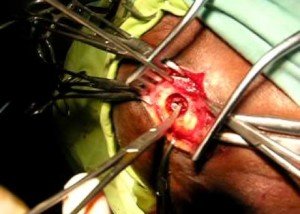
Find out the ideal timelines for follow-up CT and MRI imaging for a chronic subdural hematoma.
A chronic subdural hematoma is typically diagnosed with a CT scan after a patient suffers a head trauma, or, after the patient begins displaying neurological symptoms weeks after the incident (which may have been forgotten due to its seeming triviality), and the image is ordered.
Suppose an elderly patient, who suffers a bang on the head, has a normal CT scan several hours, and then perhaps about 24 hours after that.
Now, how soon after this second imaging procedure should the patient have a follow-up, and should it be computed tomography or an MRI?
MRI is more sensitive and doesn’t deliver radiation: two reasons a savvy patient may request it over the CT scan.
Another point to consider is if the patient isn’t displaying any neurological symptoms that would suggest the presence of a chronic subdural hematoma.
Why have the procedure if there are no apparent symptoms of a chronic subdural hematoma?
Because maybe the patient wants to get ahead of the game; if a tiny, asymptomatic bleed is discovered, the patient may then decide to take it easy over the ensuing days (no driving, no activities that can cause a fall, etc.), and adhere to watchful waiting.
“If patient after head injury was hospitalized or spent around 24 hours in ER for observation, and had two CT scans at least six hours apart and they both were normal,” then the patient should not have a follow-up study as long as there were no neurological symptoms at the get-go, and no new-onset symptoms, explains Ivan Mikolaenko, MD, a board certified neurologist of 20+ years based in New York with subspecialty certification in neurocritical care.
What if the patient had neurological symptoms at the get-go, and after one month, the symptoms have not resolved or improved?
Dr. Mikolaenko says that if the patient “is still symptomatic one month post-head injury, then I would order a brain MRI and make sure special hemosiderin sequences (GE or SWI) are done to detect microbleeds or small cSDH.”
He explains further: “Special hemosiderin sequences like gradient echo (GE) or susceptibility weighted imaging (SWI) are very sensitive for detecting even the smallest microbleeds or thinnest cSDH regardless how old was the bleed.”
MRI, then, not only is more sensitive, but doesn’t yield radiation exposure.
Conditions treated by Dr. Mikolaenko in the intensive care setting include strokes, ruptured aneurysms, trauma-related brain and spinal cord injuries, seizures and brain swelling, infections and tumors.
 Lorra Garrick has been covering medical, fitness and cybersecurity topics for many years, having written thousands of articles for print magazines and websites, including as a ghostwriter. She’s also a former ACE-certified personal trainer.
Lorra Garrick has been covering medical, fitness and cybersecurity topics for many years, having written thousands of articles for print magazines and websites, including as a ghostwriter. She’s also a former ACE-certified personal trainer.
.










































